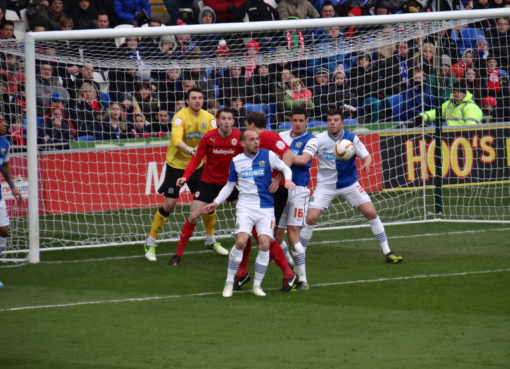Southampton’s Yellow Card Dilemma: A Look into Discipline

Southampton Football Club, affectionately known as the Saints, has a rich history in English football. From their humble beginnings to their rise in the Premier League, the club has seen its fair share of triumphs and tribulations. However, one aspect that often goes under the radar is the team’s disciplinary record. Yellow cards, those cautionary flags waved by referees, can significantly impact a team’s performance, leading to suspensions, changes in tactics, and even influencing the outcome of a match.
This article delves deep into Southampton’s yellow card statistics, exploring the trends, the players involved, and the potential consequences for the club.
A Statistical Overview: Yellow Cards in Context
Analyzing yellow card data provides valuable insights into a team’s playing style, its approach to tackling, and its overall discipline. While aggression and physicality are inherent parts of football, excessive fouls and dissent can lead to a flurry of yellow cards, ultimately hindering a team’s progress.
Southampton Football Club logo
Unfortunately, precise historical data on Southampton’s yellow card accumulation across all seasons is not readily available. However, recent seasons’ statistics offer a glimpse into the club’s disciplinary trends.
According to Premier League statistics, Southampton has consistently ranked among the teams with the highest number of yellow cards in the league. For instance, in the 2023/24 season, the Saints accumulated a total of 69 yellow cards, placing them joint-first in the league for most cautions received. This indicates a tendency towards a more physical and sometimes reckless approach to the game.
Key Contributors: Players with a Knack for Cautions
While yellow cards are often a collective issue for a team, certain players tend to accumulate more cautions than others. These players might be known for their tough tackling, their tendency to engage in heated exchanges with opponents, or their propensity to question refereeing decisions.
In the 2024/25 season, Flynn Downes emerged as the player with the most yellow cards for Southampton, receiving a total of 9 cautions. Downes, a midfielder known for his combative style, often found himself in the referee’s book for challenges and tactical fouls.
Other players who frequently received yellow cards for Southampton in recent seasons include Taylor Harwood-Bellis, Mateus Fernandes, and Tyler Dibling. These players, primarily defenders and midfielders, often play crucial roles in breaking up opposition attacks, which sometimes involves committing fouls that warrant cautions.

The Impact of Yellow Cards: Suspensions and Tactical Adjustments
Accumulating yellow cards can have significant repercussions for both individual players and the team as a whole. In the Premier League, a player who receives five yellow cards within the first 19 matches of the season is handed a one-match suspension. Further suspensions follow for reaching 10 and 15 yellow cards.
These suspensions can disrupt team dynamics, forcing managers to make unexpected changes to their starting lineups. Key players missing crucial matches due to yellow card accumulation can significantly weaken a team’s chances of success.
Moreover, the fear of receiving a yellow card can influence a player’s behavior on the pitch. Players who are already on a yellow card may be more hesitant to commit to tackles or challenge for the ball, potentially hindering their effectiveness and impacting the team’s overall performance.
Disciplinary Concerns: Addressing the Yellow Card Issue
Southampton’s consistent high number of yellow cards raises concerns about the team’s disciplinary record. While aggression and physicality are part of the game, excessive cautions can be detrimental to the team’s success.
Managers and coaching staff often emphasize the importance of discipline and responsible tackling to their players. Analyzing yellow card statistics can help identify players who are more prone to cautions, allowing coaches to work with them on improving their tackling technique and decision-making.
Furthermore, the team’s overall approach to the game can be a factor. A more possession-based style of play, focused on quick passing and movement, can reduce the need for desperate tackles and minimize the risk of yellow cards.
The Role of the Referee: Subjectivity and Consistency
It’s important to acknowledge that the awarding of yellow cards is not always objective. Referees have different interpretations of what constitutes a foul, and their decisions can sometimes be influenced by the context of the game or the reputation of the players involved.
This subjectivity can lead to inconsistencies in the way yellow cards are distributed, with some teams and players potentially being penalized more harshly than others. While efforts are made to ensure consistency in officiating, the human element inevitably introduces a degree of variability.
FAQs
What is a yellow card in football?
A yellow card in football is given to a player as a warning for committing a foul or unsporting behavior during a match. The card is shown by the referee to indicate that the player has been cautioned. If a player accumulates two yellow cards in a match, they are sent off (red card). A yellow card can be given for offenses such as:
Dangerous or reckless tackles
Persistent fouling
Time-wasting
Dissent towards the referee
Diving or simulation
At Southampton FC, like any other team, yellow cards can have a significant impact on the flow of the game and a player’s future availability due to suspensions from accumulating too many.
Who holds the record for most yellow cards for Southampton FC?
As of recent seasons, James Ward-Prowse has been among the players with a high tally of yellow cards for Southampton FC, particularly due to his role as a central midfielder, where tackling and engaging with opposition players are frequent. Ward-Prowse is known for his work ethic and aggressive style of play, often putting him in positions where yellow cards are a likely outcome.
However, it’s important to note that other players from previous eras, such as Graeme Souness and Matt Le Tissier, also had their fair share of yellow cards, but their playing styles differed, with Souness often involved in gritty, combative midfield duels.
How do yellow cards affect player suspensions for Southampton?
Yellow cards accumulate over a series of matches, and accumulating a specific number can result in a suspension. In the Premier League, if a player receives five yellow cards in a season, they are typically given a one-match suspension. For example, if a Southampton player receives five yellow cards in the first 19 games of the season, they will miss one match after the 19th game. This rule is intended to deter reckless behavior and maintain fairness in the competition.
Suspensions due to yellow card accumulation can affect a team’s performance, especially when key players are missing. Therefore, Southampton FC often has to manage player discipline to avoid key suspensions at critical times during the season.
Which position on the field accumulates the most yellow cards for Southampton players?
Generally, midfielders and defenders are the most likely to accumulate yellow cards, as they are often involved in tackles, challenges, and stopping the opposition’s progress. For Southampton, players in central midfield positions, such as James Ward-Prowse, Oriol Romeu, or Pierre-Emile Højbjerg (in past seasons), have historically received more yellow cards because of their combative roles in the middle of the park. These players are often required to break up attacking plays, which naturally leads to more fouls.
Defenders, particularly central defenders, also accumulate yellow cards due to their responsibility to defend against opposing forwards and wingers. Jannik Vestergaard, for example, received multiple yellow cards due to his aerial duels and physical defending style.
How do referees decide to give a yellow card during a Southampton match?
Referees have discretion when deciding to issue yellow cards, but they are guided by the rules of the game. The decision is often based on the severity of the foul, the impact on the game, and the referee’s judgment. Some common reasons for referees showing yellow cards include:
A tackle deemed reckless or late
Persistent foul play or professional fouls
Time-wasting or delaying the game
Dissent or arguing with the referee’s decisions
Simulation (diving) to deceive the referee
Southampton FC, like any team, often finds itself in situations where referees must decide whether to issue a yellow card to their players. In the case of heavy challenges, Southampton players often look to avoid unnecessary yellow cards, as accumulating too many cautions can impact the team’s performance over the course of the season.
In Summary
Yellow cards are an integral part of football, serving as a mechanism to maintain discipline and ensure fair play. However, excessive cautions can hinder a team’s progress and impact its chances of success.
Southampton’s high number of yellow cards in recent seasons suggests a need for the team to address its disciplinary concerns. While aggression and physicality are important attributes, finding the right balance between these qualities and responsible play is crucial.
By analyzing yellow card statistics, identifying players prone to cautions, and emphasizing discipline and responsible tackling, Southampton can strive to reduce its yellow card accumulation and improve its overall disciplinary record. This, in turn, can contribute to the team’s on-field success and its ability to compete at the highest level.
To read more, Click here



Leave a Comment